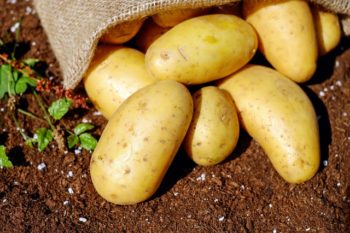 Not so many years ago every quarter-acre section boasted a large potato patch to feed the family. As a tasty, versatile and affordable addition to any meal, it just made sense to grow your own. But as property sizes shrunk, the demand for growing your own spuds also diminished.
Not so many years ago every quarter-acre section boasted a large potato patch to feed the family. As a tasty, versatile and affordable addition to any meal, it just made sense to grow your own. But as property sizes shrunk, the demand for growing your own spuds also diminished.
Not so any more. At NZ Bulbs we’ve seen a big resurgence in home potato growing. Gone are the days when you were obliged to purchase a 2kg bag of seed potatoes to get your own crop growing. Packs of 5, 10 or 20 seed potatoes cater for all garden sizes.
Whether you’ve got a small or large garden, potatoes are a must-have vegetable. Growing potatoes is a great way to get children into gardening, and nothing beats your own home-grown spuds on the Christmas table.
So, where to start? With quality certified seed potatoes. Seed potatoes look just like regular potatoes but are usually smaller, and are certified free of disease, so you know you’re getting the best start. At NZ Bulbs we have 12 different varieties of seed potatoes available including well known varieties like Jersey Benne, Agria and Rua.
The type of potato you choose to plant will depend largely on what you want to do with it and when you want to harvest.
Seed potatoes fit into three categories – early, early-main and main crop. Early potatoes are ready to harvest early, and really need to be harvested early as they are not long-term growers. They also taste a lot better when harvested early – the classic early sweet-tasting new potato.
Early-main crop potatoes CAN be harvested early to get ‘new’ potatoes, OR can happily be left in the ground until the top growth dies back and the skins thicken up. Harvested later, they are no longer ‘new’ potatoes, but larger and thicker skinned.
And main crop potatoes need longer in the ground and should be left in until the tops die back in autumn before harvest. They will be larger, thick-skinned and also keep well.
If you want to ensure you’re serving home-grown spuds at Christmas, plant early potatoes such as Rocket, Swift, Jersey Benne or Cliff Kidney. These ones can be harvested after about 90 days so, if planted in September, will be ready for Christmas.
Potatoes also vary in their make up. Some are called ‘waxy’ potatoes and these are lower in starch and hold together much better when cooking – they are more suitable for salads, boiling and casseroles. Others varieties are called ‘floury’ potatoes and these ones are higher in starch and ideal for wedges, chips, roasting and mashing. The earlier potatoes tend to be more the waxy types, and the later varieties more floury.
If you’re looking for a general purpose potato, try Desiree or Rua – these are suitable for most uses.
Once purchased, remove your seed potatoes from the bag or container and leave them in a light, dry place for a few weeks so they can start to shoot.
A garage bench or garden shed is ideal.
When the potato shoots are approximately 2cm long they’re ready to plant. Before doing so, work in some compost to the soil to make it more friable and easier for the potatoes to grow, as well as easier for you to harvest.
Next, dig a v-shaped trench about 15cm deep in your garden and place the potatoes in the bottom of it – approximately 40cm apart.
You don’t need to fill the trench back up at this stage, just cover the planted potatoes with at least 5cm of soil. New spuds hate Jack Frost, so keep an eye on them and as the shoots start to push through, cover them a little more each week until you have turned your trench into a mound of 15-20cm in height after 6-8 weeks.
The more growing stem beneath the soil, the more opportunity for the plant to produce potatoes and the bigger your crop.
To keep diseases away, don’t overhead water your potatoes excessively. Once planted the rain should be enough to keep them going until they’re ready for harvesting.
I also recommend covering your potato crop with some insect-proof netting which will keep out the potato-tomato psyllid, a small insect that can cause a lot of damage to tomato and potato crops. The netting is a perfect non-spray method to ensure your potatoes stay healthy and yield a great crop.
You can purchase some of this netting when you order your seed potatoes from NZ Bulbs. And the mesh we sell will last for many seasons as it is strong and UV resistant.
Because the plants can be attacked by the psyllid at any growth stage, you should put the netting on the potatoes when you plant them and keep it on until you harvest.
You can put the netting on loosely at the start or just loosen it as they get bigger. Just make sure the plants aren’t pushing hard against it or being damaged and that it is tucked into the dirt securely on all edges.
As to when to harvest your potatoes – some varieties die back above ground and this is the time to harvest, but not all varieties do this.
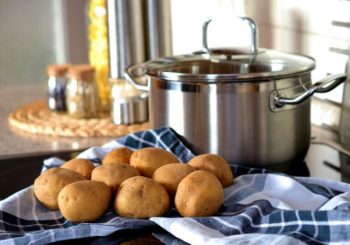 The best way to tell if your potatoes are ready is to ‘tickle’ a few up to check. Get out your trowel and loosen the dirt around a few of your potato plants, put your hand in the soil and gently pull out a spud or two to check progress. If your potatoes are small, cover them up again with dirt and leave them to grow.
The best way to tell if your potatoes are ready is to ‘tickle’ a few up to check. Get out your trowel and loosen the dirt around a few of your potato plants, put your hand in the soil and gently pull out a spud or two to check progress. If your potatoes are small, cover them up again with dirt and leave them to grow.
Lastly, once you’ve harvested your potatoes, dig the plant back in to the ground. The top growth has plenty of good nutrients in it and working it into the soil helps to improve the soil structure in the same way that adding compost does.
Click here to receive more gardening tips & tricks.







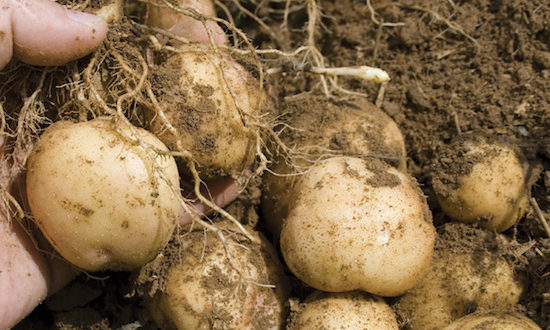
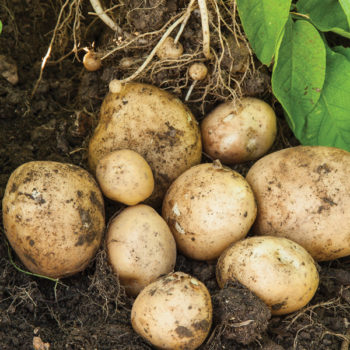
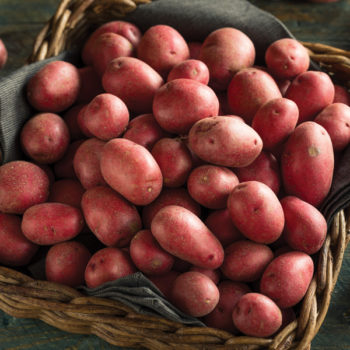


Join the Discussion
Type out your comment here:
You must be logged in to post a comment.